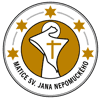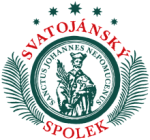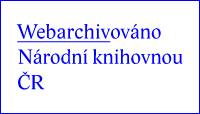1369: on 20th June, John of Pomuk, a son of the late Velfl?, is for the first time recorded as a notary public in Prague.
1380: John is recorded as an altar priest in the St. Vitus Cathedral, a secretary to archbishop John of Jen?tejn and (on 5th September) as a parish priest in the Church of St. Havel in the Old Town.
1383-1387: John of Pomuk is a student of canon law in Padua.
1387: After his coming back from the Italian studies to Prague, John is recorded as Doctor of Decrees and a canon in the Church of St. Giles.
1389: John is recorded as a canon of the Vy?ehrad chapter and the vicar general of the Prague archbishop in the spirituals (on 1st October).
1390: on 26th August John replaces his post of a parish priest in the Church of St. Havel by the office of the ?atec archdeacon.
1393: on 20th March John of Pomuk dies on tortures, his body is thrown down from a bridge to the river Vltava.
Archbishop John of Jen?tejn brings in Rome to the Roman Curia an action against Wenceslas IV.
1396 – 1416: The body of vicar general John of Pomuk is buried in the St. Vitus Cathedral at the Prague castle.
after 1449: Tom?Ebendorfer of Haselbach publishes the assumption according to which the reason for John’s death was a secret of the confessional.
1471: Master Pavel ??ek states in book Spravovna the story of Doctor Joh?ek, the confessor of the Czech queen.
about 1480: The inventory of the St. Vitus treasure records a votive gift in honour of the ”beatified John of Pomuk”.
1483: The dean of the St. Vitus chapter John of Krumlov by mistake records an incorrect date of death of John of Pomuk – 1383.
1541: Kronika ?sk?(the Czech Chronicle) by V?lav H?ek of Libo?ny is published including stories of two priests allegedly drowned under Wenceslas IV. in 1383 and 1393.
1599: Ji? Barthold Pontanus of Breitenberk ranks ”John the Confessor” among the Czech country’s patron saints.
1619: The grave of John of Pomuk is damaged during the Calvinist iconoclasm in the St. Vitus Cathedral.
1621: on 16th July the Prague archbishop Lohelius consecrates a cathedral altar whose patron saints also include the ”beatified John of Nepomuk, a famous martyr”.
1630: Wood carver Ka?par Bechteler depicts ”St. John the Confessor” among the Czech saints on the relief of the entrance door of the cathedral.
1641: An anonymous book Fama posthuma Joannis Nepomuceni in verse is published in honour of the martyr.
1668: Canon Jan Ign? Dlouhovesk?writes Latin biography of John of Nepomuk.
1680: In edition Acta sanctorum St. John’s legend by Bohuslav Balb? is published.
1683: On the Prague bridge the statue of John Nepomuck?by Jan Brokoff is raised.
1701: Terezie Krebsov?is cured, which is attributed to John Nepomuck?and later on recognised as a miracle.
1715: the Prague archbishop Ferdinand Kh?burg opens the beatification process.
1718: Rescue of Roz?ie Hod?kov?from drowning in the river Otava.
1719: on 15th April during exhumation of John’s body, a relic is found that is considered a tongue.
1721: on 31st May pope Innocent XIII. declares John of Nepomuk beautified.
On 4th July beatification celebrations are held in Prague.
1722: The canonisation process is opened in Prague.
1725: on 27th January the archiepiscopal commission detects swelling up and a change in colour of St. John’s relics.
The canonisation process is opened in Rome.
1729: on 19th March pope Benedict XIII. declares John of Nepomuk a saint.
On 9th –16th October grand canonisation celebrations are held in Prague.
1736: Silver mausoleum of John of Nepomuk is established in the St. Vitus Cathedral.
1747: Eli?Sandrich refutes H?ek’s error and dates John’s death to 1393.
1752: The text of Jen?tejn’s action of 1393 gets to Prague.
1784: Gelasius Dobner publishes hypothesis on the identity of a historical vicar John of Pomuk with a legendary martyr to a secret of the confessional.
1787: Josef Dobrovsk?argues with Dobner and excludes confession as the reason for John’s death.
1829: Grand centenary celebrations of canonisation of John of Nepomuk in Prague.
1849: Ferdinand B?tislav Mikovec publishes the theory, according to which saint John of Nepomuk was artificially created to dwarf remembrance of John Huss.
1855: The book by Otto Abel The legend of St. John of Nepomuk is published, which becomes the basis of argumentation of opponents of the cult.
1919-1920: A wave of destruction of St. John’s monuments in Bohemia.
1921: Three chapters from the struggle for St. John of Nepomuk by Josef Peka?are published in book form.
1925: The government of the Czechoslovak Republic cancels the country’s holiday of St. John of Nepomuk as the public holiday.
1973: Anthropological research of the relics of St. John of Pomuk confirms their authenticity. At the same time the research detects that the alleged tongue is in fact the remnant of a cerebral tissue.
1993: ”The year of St. John of Nepomuk” within the programme The decade of spiritual restoration declared by the Prague archbishop cardinal František Tomášek.
Mgr. Luděk Krčmář













